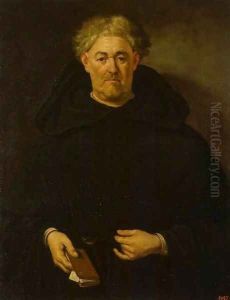Juan de Pareja Paintings
Juan de Pareja (1606 – 1670) was a Spanish painter of the Baroque period. Notably, he was born into slavery in Antequera, near Málaga, Spain. He was of mixed heritage, born to a Spanish mother and a sub-Saharan African father. His life took a significant turn when he became the property of the Spanish painter Diego Velázquez, who was the leading artist in the court of King Philip IV.
Pareja's work as an artist developed while in Velázquez's workshop. Initially, he worked as an assistant, performing tasks such as preparing canvases and mixing paints. However, over time, it became clear that he had considerable artistic talent. Despite laws in Spain prohibiting slaves from practicing the arts, Velázquez secretly taught Pareja to paint. His skill developed to such an extent that he began producing high-quality work, which was sometimes indistinguishable from that of his master. In fact, some of Pareja's works were mistakenly attributed to Velázquez.
In 1650, Velázquez took Pareja with him to Italy, where Pareja was exposed to a wide array of Renaissance and contemporary art. This experience further refined his artistic abilities. It was during this trip, at the age of 44, that Pareja was freed by Velázquez, an event documented in a notable painting by the master himself, 'The Calling of Saint Matthew'. After his emancipation, Pareja continued to work in Velázquez's workshop, but now as a free man and official assistant.
Pareja's most famous painting is the 'Calling of Saint Matthew', which he created to prove his skill to the painters of Rome. He also painted religious works and portraits. Unfortunately, only a few of his works have survived, but those that do show a remarkable command of technique and a style that, while bearing traces of Velázquez's influence, is distinct and personal.
After Velázquez's death in 1660, Pareja returned to Madrid, where he continued to work and paint. His later years are less documented, but it is known that he died in Madrid on April 25, 1670. While he never achieved the fame of his master during his lifetime, Juan de Pareja is now recognized as a significant figure in Spanish art, celebrated for his resilience in overcoming the extraordinary challenges of his early life and for his contributions to the Baroque period.
